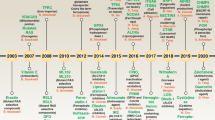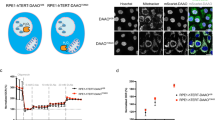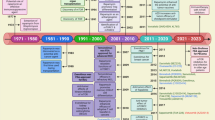Abstract
Hypoxia-inducible factor (HIF-1) is an oxygen-dependent transcriptional activator, which plays crucial roles in the angiogenesis of tumors and mammalian development. HIF-1 consists of a constitutively expressed HIF-1β subunit and one of three subunits (HIF-1α, HIF-2α or HIF-3α). The stability and activity of HIF-1α are regulated by various post-translational modifications, hydroxylation, acetylation, and phosphorylation. Therefore, HIF-1α interacts with several protein factors including PHD, pVHL, ARD-1, and p300/CBP. Under normoxia, the HIF-1α subunit is rapidly degraded via the von Hippel-Lindau tumor suppressor gene product (pVHL)- mediated ubiquitin-proteasome pathway. The association of pVHL and HIF-1α under normoxic conditions is triggered by the hydroxylation of prolines and the acetylation of lysine within a polypeptide segment known as the oxygen-dependent degradation (ODD) domain. On the contrary, in the hypoxia condition, HIF-1α subunit becomes stable and interacts with coactivators such as p300/CBP to modulate its transcriptional activity. Eventually, HIF-1 acts as a master regulator of numerous hypoxia-inducible genes under hypoxic conditions. The target genes of HIF-1 are especially related to angiogenesis, cell proliferation/survival, and glucose/iron metabolism. Moreover, it was reported that the activation of HIF-1α is closely associated with a variety of tumors and oncogenic pathways. Hence, the blocking of HIF-1a itself or HIF-1α interacting proteins inhibit tumor growth. Based on these findings, HIF-1 can be a prime target for anticancer therapies. This review summarizes the molecular mechanism of HIF-1a stability, the biological functions of HIF-1 and its potential applications of cancer therapies.
Similar content being viewed by others
Article PDF
Author information
Authors and Affiliations
Rights and permissions
This is an Open Access article distributed under the terms of the Creative Commons Attribution Non-Commercial License (http://creativecommons.org/licenses/by-nc/3.0/) which permits unrestricted non-commercial use, distribution, and reproduction in any medium, provided the original work is properly cited.
About this article
Cite this article
Lee, JW., Bae, SH., Jeong, JW. et al. Hypoxia-inducible factor (HIF-1)α: its protein stability and biological functions. Exp Mol Med 36, 1–12 (2004). https://doi.org/10.1038/emm.2004.1
Published:
Issue Date:
DOI: https://doi.org/10.1038/emm.2004.1



